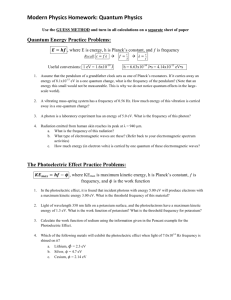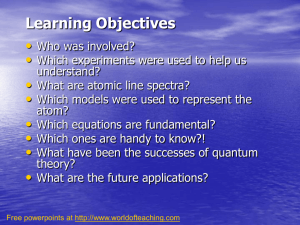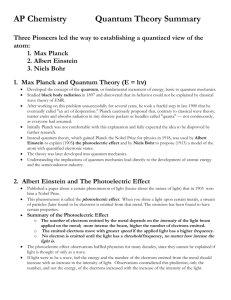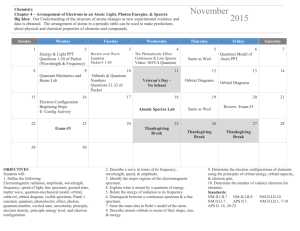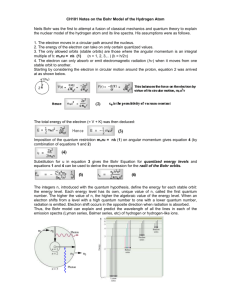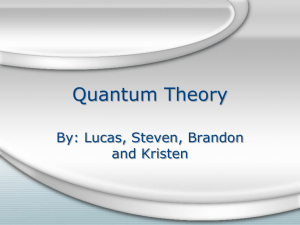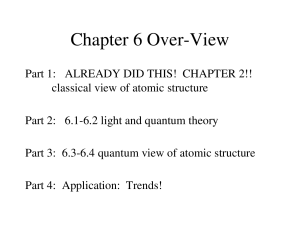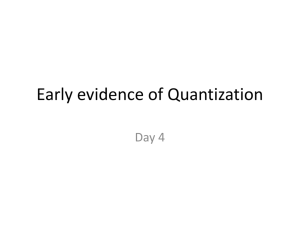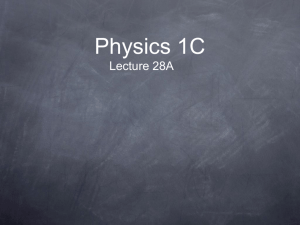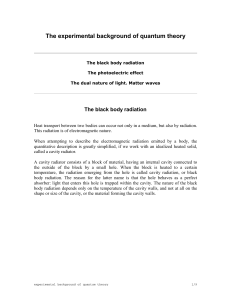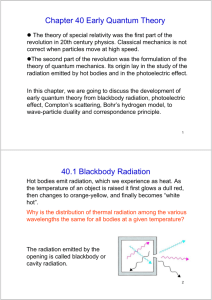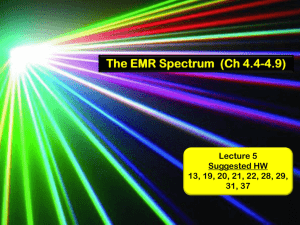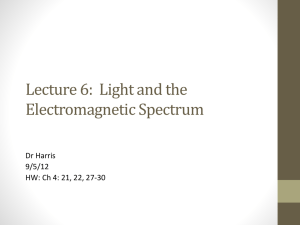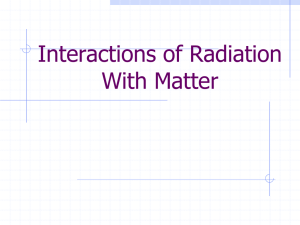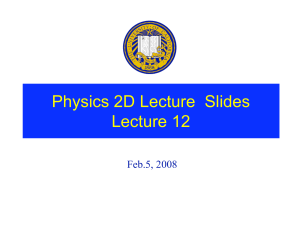Unit 2: Structure of Matter Content Outline: Photoelectric Effect
advertisement
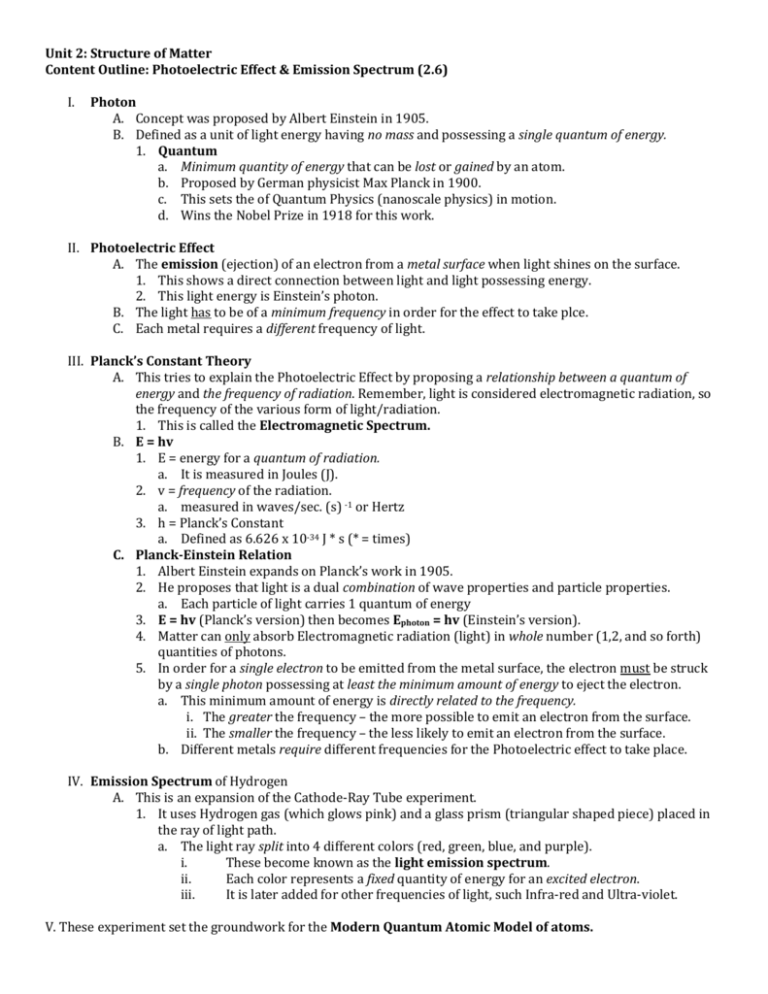
Unit 2: Structure of Matter Content Outline: Photoelectric Effect & Emission Spectrum (2.6) I. Photon A. Concept was proposed by Albert Einstein in 1905. B. Defined as a unit of light energy having no mass and possessing a single quantum of energy. 1. Quantum a. Minimum quantity of energy that can be lost or gained by an atom. b. Proposed by German physicist Max Planck in 1900. c. This sets the of Quantum Physics (nanoscale physics) in motion. d. Wins the Nobel Prize in 1918 for this work. II. Photoelectric Effect A. The emission (ejection) of an electron from a metal surface when light shines on the surface. 1. This shows a direct connection between light and light possessing energy. 2. This light energy is Einstein’s photon. B. The light has to be of a minimum frequency in order for the effect to take plce. C. Each metal requires a different frequency of light. III. Planck’s Constant Theory A. This tries to explain the Photoelectric Effect by proposing a relationship between a quantum of energy and the frequency of radiation. Remember, light is considered electromagnetic radiation, so the frequency of the various form of light/radiation. 1. This is called the Electromagnetic Spectrum. B. E = hv 1. E = energy for a quantum of radiation. a. It is measured in Joules (J). 2. v = frequency of the radiation. a. measured in waves/sec. (s) -1 or Hertz 3. h = Planck’s Constant a. Defined as 6.626 x 10-34 J * s (* = times) C. Planck-Einstein Relation 1. Albert Einstein expands on Planck’s work in 1905. 2. He proposes that light is a dual combination of wave properties and particle properties. a. Each particle of light carries 1 quantum of energy 3. E = hv (Planck’s version) then becomes Ephoton = hv (Einstein’s version). 4. Matter can only absorb Electromagnetic radiation (light) in whole number (1,2, and so forth) quantities of photons. 5. In order for a single electron to be emitted from the metal surface, the electron must be struck by a single photon possessing at least the minimum amount of energy to eject the electron. a. This minimum amount of energy is directly related to the frequency. i. The greater the frequency – the more possible to emit an electron from the surface. ii. The smaller the frequency – the less likely to emit an electron from the surface. b. Different metals require different frequencies for the Photoelectric effect to take place. IV. Emission Spectrum of Hydrogen A. This is an expansion of the Cathode-Ray Tube experiment. 1. It uses Hydrogen gas (which glows pink) and a glass prism (triangular shaped piece) placed in the ray of light path. a. The light ray split into 4 different colors (red, green, blue, and purple). i. These become known as the light emission spectrum. ii. Each color represents a fixed quantity of energy for an excited electron. iii. It is later added for other frequencies of light, such Infra-red and Ultra-violet. V. These experiment set the groundwork for the Modern Quantum Atomic Model of atoms.


